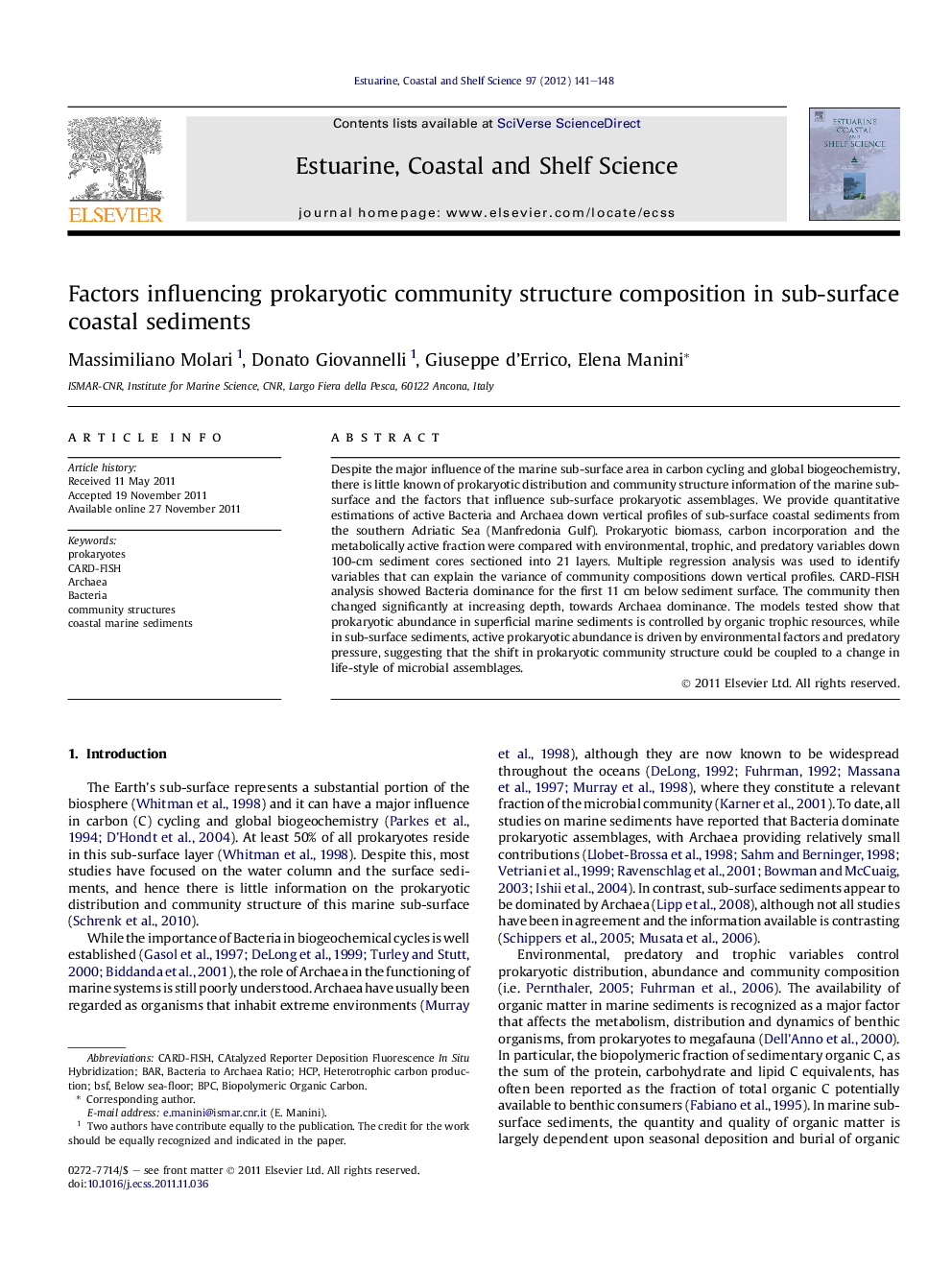| Article ID | Journal | Published Year | Pages | File Type |
|---|---|---|---|---|
| 4540438 | Estuarine, Coastal and Shelf Science | 2012 | 8 Pages |
Despite the major influence of the marine sub-surface area in carbon cycling and global biogeochemistry, there is little known of prokaryotic distribution and community structure information of the marine sub-surface and the factors that influence sub-surface prokaryotic assemblages. We provide quantitative estimations of active Bacteria and Archaea down vertical profiles of sub-surface coastal sediments from the southern Adriatic Sea (Manfredonia Gulf). Prokaryotic biomass, carbon incorporation and the metabolically active fraction were compared with environmental, trophic, and predatory variables down 100-cm sediment cores sectioned into 21 layers. Multiple regression analysis was used to identify variables that can explain the variance of community compositions down vertical profiles. CARD-FISH analysis showed Bacteria dominance for the first 11 cm below sediment surface. The community then changed significantly at increasing depth, towards Archaea dominance. The models tested show that prokaryotic abundance in superficial marine sediments is controlled by organic trophic resources, while in sub-surface sediments, active prokaryotic abundance is driven by environmental factors and predatory pressure, suggesting that the shift in prokaryotic community structure could be coupled to a change in life-style of microbial assemblages.
